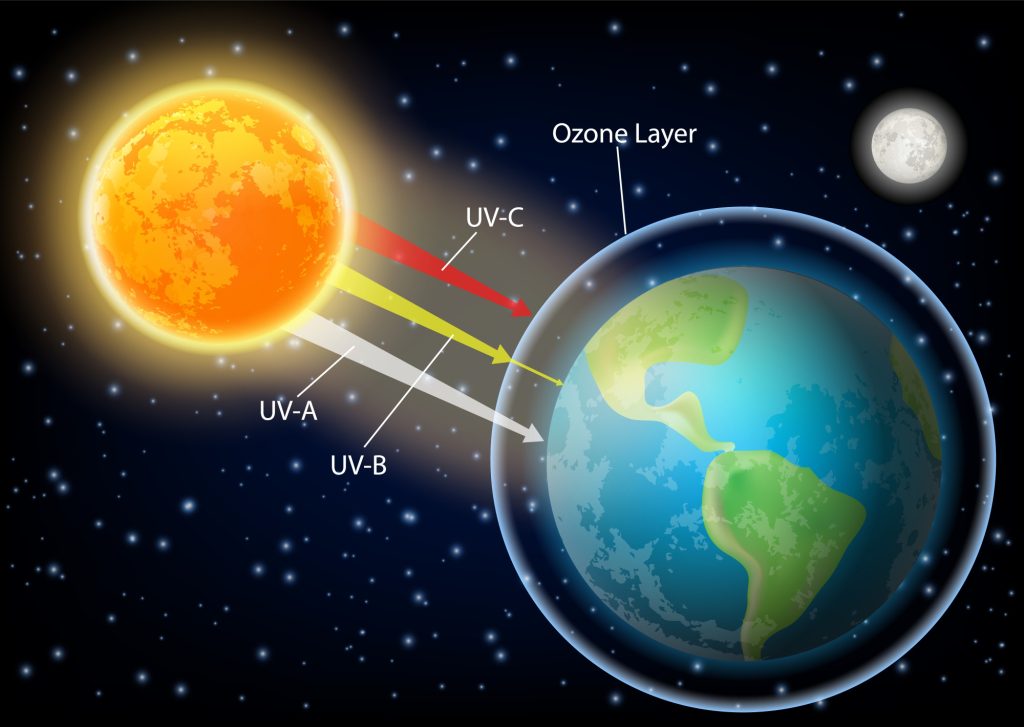The ozone layer, a delicate shield of gas, safeguards Earth by blocking harmful ultraviolet rays from the sun, thus preserving life on the planet.
The global phaseout of ozone-depleting substances has not only protected the ozone layer for current and future generations but also contributed significantly to combating climate change. Moreover, this effort has shielded human health and ecosystems by limiting the amount of harmful ultraviolet radiation reaching Earth.
Montreal Protocol: Advancing Climate Action
This World Ozone Day, we celebrate the progress made while also looking ahead for deeper and faster action under the Montreal Protocol—not just for the ozone layer but for people, climate, and the planet. The UNEP Ozone Secretariat has released a social media package in six languages, offering cards, videos, and suggested messages.
Background
Certain chemicals, notably halocarbons (compounds where one or more carbon atoms are bonded to halogen atoms like fluorine, chlorine, bromine, or iodine), are particularly harmful to the ozone layer. Halocarbons containing bromine are more destructive than those with chlorine. Key ozone-depleting chemicals include methyl bromide, methyl chloroform, carbon tetrachloride, and groups like halons, chlorofluorocarbons (CFCs), and hydrochlorofluorocarbons (HCFCs).
Vienna Convention for the Protection of the Ozone Layer
The discovery of ozone depletion led the international community to create the Vienna Convention in 1985, which became the foundation for cooperation on protecting the ozone layer. This laid the groundwork for the Montreal Protocol, signed in September 1987, which aims to phase out substances that damage the ozone layer.
The Montreal Protocol
The Montreal Protocol’s main objective is to safeguard the ozone layer by controlling the production and consumption of nearly 100 ozone-depleting chemicals. The Protocol categorises these substances by chemical families and outlines a timeline for their phase-out, with the goal of eventually eliminating them. The phase-out schedule applies to consumption, defined as the total of production and imports minus exports, with allowances for destruction. Some exceptions exist, such as metered-dose inhalers for asthma and fire-suppression systems in submarines and aircraft, where alternatives are not yet available.
In 1994, the United Nations designated 16 September as the International Day for the Preservation of the Ozone Layer, marking the signing of the Montreal Protocol.
Implementation of the Montreal Protocol
The Protocol’s implementation has progressed successfully in both developed and developing countries, with most phase-out schedules being met ahead of time. Initially, the focus was on high ozone-depleting chemicals like CFCs and halons. The phase-out of HCFCs, less harmful but still damaging, began later, with a deadline of 2030 for developed nations and 2040 for developing nations. In 2007, this timeline was accelerated.
Universal Ratification and the Kigali Amendment
On 16 September 2009, the Vienna Convention and Montreal Protocol became the first UN treaties to achieve universal ratification. At the 28th Meeting of the Parties in Kigali, Rwanda, in 2016, the Protocol was amended to phase down hydrofluorocarbons (HFCs), further advancing global climate action.
Secretary-General’s Message for the International Day for the Preservation of the Ozone Layer
In an era where multilateralism faces immense challenges, the Montreal Protocol stands as a beacon of hope. It serves as a powerful reminder that when nations come together with political will for the greater good, meaningful change is possible.
By uniting the world in the phaseout of ozone-depleting substances, the Protocol has not only protected the ozone layer but has also safeguarded carbon sinks, preserved human health, and prevented significant economic losses.
What was once a deteriorating ozone layer is now on the path to recovery.
But we must go further.
The Kigali Amendment to the Montreal Protocol, which targets the reduction of hydrofluorocarbons (HFCs)—potent greenhouse gases—can play a crucial role in advancing climate action. As global temperatures continue to break records, the need for such action has never been greater.
If fully ratified and implemented, the Kigali Amendment could prevent up to 0.5 degrees Celsius of global warming by the end of this century. However, additional climate solutions, including those related to refrigerants and energy efficiency, are vital to avoiding a climate catastrophe by mid-century.
Although four out of five countries have ratified the Kigali Amendment, time is running out.
On this World Ozone Day, let us pledge to make peace with our planet. Let us build on the success of the Montreal Protocol and demonstrate the power of international cooperation at its finest.

